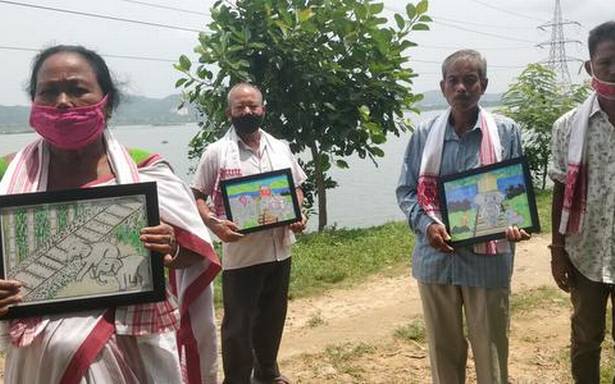Rural guards honoured with artwork depicting elephants negotiating a killer railway track
About six years ago, dairy farmer Pramod Kalita felt he needed to document the deterioration of the wetland that sustained his forefathers and ensured ample food for herds of elephants that would troop past his village Chakardeo.
His informal group of 25 members pooled money for three digital single-lens reflex cameras and went about clicking the elephants, trees, birds, boats, a massive garbage dump and warehouses and a “killer railway track skirting Deepor Beel, a freshwater lake on the south-western edge of Guwahati”.
Designated a Ramsar Site in 2002 and an Important Bird Area for sustaining a range of aquatic life forms besides 219 species of birds, the beel has shrunk 35% since the 1990s. Its official area now is 4,014 hectares of 15.5 square miles.
As India marked the 75th I-Day on Sunday, a row of trees separating the southern edge of Deepor Beel from a road turned into a photo exhibition gallery. A few feel-good pictures aside, the show told the tragic tale of a once-rich and much larger wetland.
“Fewer elephants come to the wetland than two-three decades ago because the wetland has lost or is losing at least five aquatic plants and reeds the animals gorged on. The number of fishermen has come down from 850 to some 100 because the water is contaminated,” Mr. Kalita said.
To make things worse, picnic spots, snacks shops and eateries along the road have contributed to the littering of the wetland.
Five green groups — Midway Journey, Earthful Foundation, Fridays for Future, Climate Front India, North East Development Agency and Xondhan — got together to clear and segregate the trash around the photo exhibition ‘gallery’ on Sunday.
They honoured some “haati bondhus” (friends of elephants), elderly residents of villages in the vicinity, who keep a watch on the pachyderms during their movement between the elevated Rani Reserve Forest and Deepor Beel.
Romila Boro, Hareswar Tumung and Bijoy Rabha were each given a framed artwork depicting elephants negotiating the killer track.
“The drawings were by children of an institute,” said Bijoyinee Sarma of Earthful Foundation.
Source: Read Full Article

